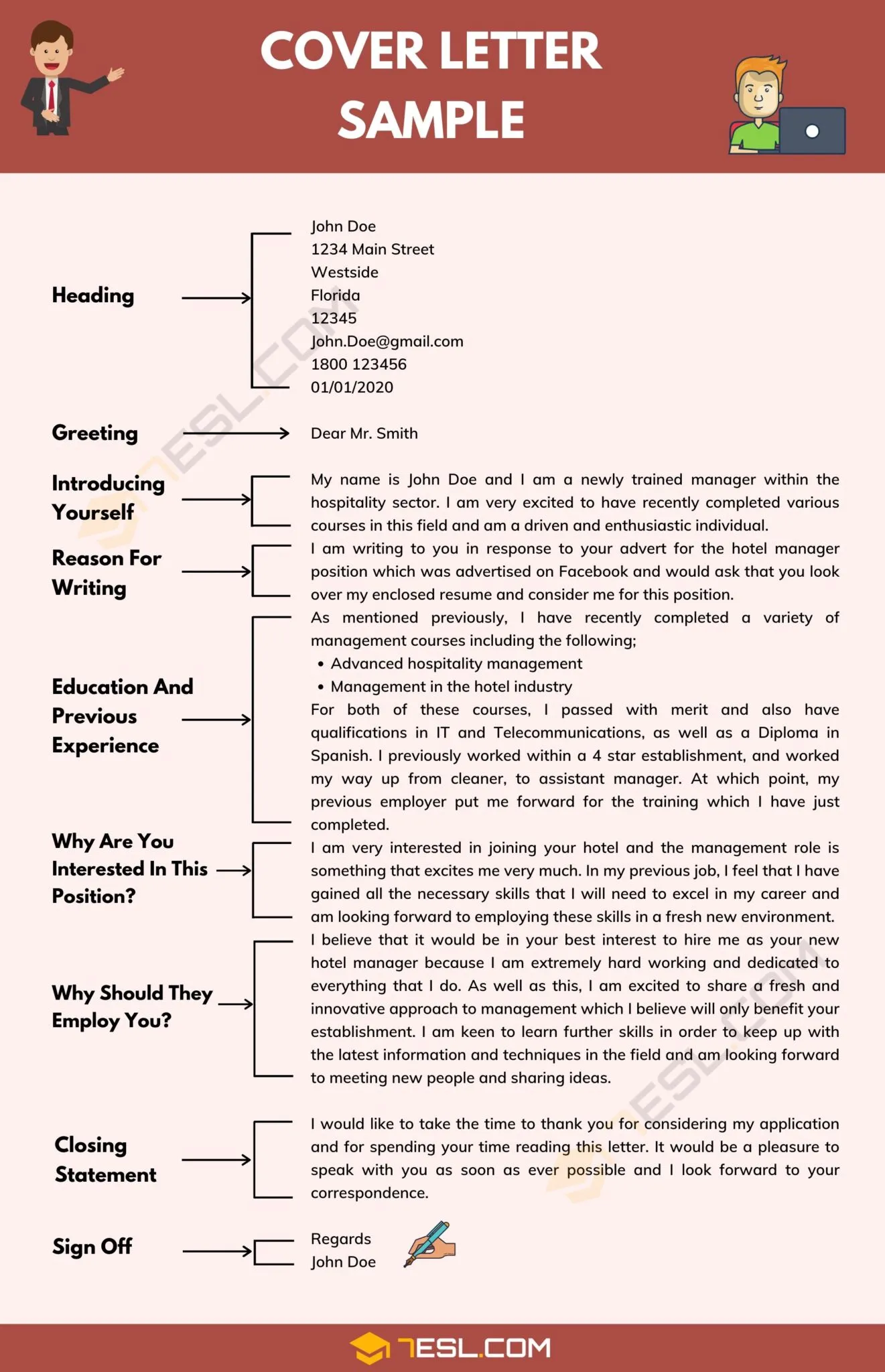Why a Great Cover Letter Matters
In the competitive landscape of job applications, a well-crafted cover letter can be your golden ticket to landing an interview. Many job seekers underestimate the power of a cover letter, viewing it as a mere formality. However, a compelling cover letter serves as your personal introduction, providing a space to connect your skills and experiences to the specific requirements of the job. It allows you to showcase your personality, demonstrate your enthusiasm for the role, and explain why you’re the perfect fit. It’s your opportunity to go beyond the confines of your resume and tell a story about your professional journey. Moreover, a strong cover letter can significantly increase your chances of getting noticed by hiring managers. It shows that you’ve taken the time to understand the company and the position, and that you’re genuinely interested in the opportunity. This level of engagement sets you apart from applicants who submit generic applications. Therefore, investing time and effort into writing a great cover letter is a crucial step in your job search process.
Cover Letter vs. Resume What’s the Difference
While a resume is a factual overview of your professional history, a cover letter is a narrative companion, providing context and personality. The resume lists your skills, experiences, and qualifications in a concise format. It’s a document of record, offering a snapshot of your career. The cover letter, on the other hand, is a tool for storytelling, where you can expand on your resume’s information, highlighting specific achievements and explaining why you’re the ideal candidate for the job. A resume should be tailored to the job description, but is usually a standard document you can use on different applications. Cover letter are fully customized for each job that you are applying to. It allows you to express your enthusiasm for the role and company, and to demonstrate your unique value proposition. The cover letter is where you can articulate your career goals, express your personality, and make a human connection with the hiring manager. The resume tells what you’ve done, while the cover letter explains why it matters.
Key Elements of a Winning Cover Letter

A winning cover letter should have several key elements to capture the reader’s attention and make a strong impression. Start with a professional and engaging header including your contact information and the date, followed by the hiring manager’s name and company address. The first paragraph is critical, so use it to clearly state the position you’re applying for and how you found the job. Make a strong statement about why you’re interested. The body of the letter is where you connect your skills and experiences to the job requirements. Use specific examples and quantifiable achievements to demonstrate your capabilities. The letter should have a professional and enthusiastic tone, showcasing your personality and passion for the role. Close the letter with a call to action, expressing your interest in an interview and thanking the hiring manager for their time and consideration. Proofread and edit meticulously before submitting your cover letter to ensure it is free of errors and reflects your professionalism.
Formatting Your Cover Letter for Success
Formatting your cover letter properly can significantly improve its readability and impact. Choose a professional font like Arial, Calibri, or Times New Roman, and use a font size between 10 and 12 points. Use single-spacing within paragraphs and double-spacing between paragraphs to create visual separation. Keep your cover letter concise, ideally no more than one page. Use clear and concise language, avoiding jargon or overly complex sentences. Divide your content into logical paragraphs with clear headings to guide the reader. Use bullet points to highlight key skills or achievements. Ensure your cover letter is free of grammatical errors and typos by proofreading carefully. Consistency in formatting throughout the document enhances its professional appearance. Save your cover letter as a PDF file to ensure that the formatting is preserved when the hiring manager opens it. Proper formatting makes your cover letter easy to read, professional, and helps you stand out from the competition.
Personalizing Your Cover Letter
Personalizing your cover letter is essential to demonstrate your genuine interest in the specific job and company. Start by researching the company and the role to understand their values, goals, and requirements. Address the hiring manager by name whenever possible; if you can’t find a name, use a professional salutation like “Dear Hiring Manager.” In the body of your letter, mention specific aspects of the company that resonate with you. Tailor your skills and experiences to directly match the job description, providing concrete examples of how you’ve successfully applied those skills in the past. Showcase your knowledge of the industry or the company’s products and services. Express your enthusiasm for the opportunity and explain why you’re a great fit for the team and culture. Personalization shows that you’ve gone beyond a generic application, highlighting your sincere interest and increasing your chances of getting noticed.
Showcasing Your Skills and Experience

Effectively showcasing your skills and experience is critical for demonstrating your value to a potential employer. Start by carefully reviewing the job description and identifying the key skills and qualifications the employer is seeking. Then, use your cover letter to explicitly connect your skills and experience to those requirements. Provide specific examples of your accomplishments, using the STAR method (Situation, Task, Action, Result) to illustrate how you’ve successfully applied your skills in the past. Quantify your achievements whenever possible, using numbers and data to show your impact. Highlight your most relevant experiences and tailor your descriptions to align with the job’s needs. Use action verbs to describe your contributions, such as “managed,” “developed,” “led,” or “implemented.” Show, don’t just tell; provide compelling evidence that you possess the skills and experience necessary to excel in the role, and that you can deliver tangible results. This makes your application more convincing and highlights your competence.
Highlighting Your Achievements
Highlighting your achievements in your cover letter is more effective than simply listing your responsibilities. Focus on what you’ve accomplished and the positive impact you’ve made in previous roles. Quantify your achievements with numbers, percentages, or specific data to demonstrate the value you brought to your previous employers. Instead of stating “Managed social media accounts,” you could say “Increased social media engagement by 40% in six months.” Use the STAR method to structure your descriptions, providing context (Situation), outlining your responsibilities (Task), describing the actions you took (Action), and stating the results you achieved (Result). Show how your contributions have led to improvements in productivity, revenue, or efficiency. Tailor your achievements to the requirements of the job, emphasizing the skills and experiences that are most relevant to the specific role. Highlighting achievements is important to show that you’re not just capable, but also a high-performing individual who can deliver meaningful results for their organization.
Tailoring Your Cover Letter to the Job
Customizing your cover letter for each job application is an essential step for increasing your chances of success. Never submit a generic cover letter. Start by carefully analyzing the job description to identify the specific skills, experiences, and qualifications the employer is seeking. Research the company and its culture to understand its values and goals. Tailor your cover letter by highlighting the experiences and skills that align directly with the job requirements. Use the same keywords and phrases from the job description. Provide specific examples of how you’ve applied those skills in the past and what results you achieved. Show that you understand the company’s mission, values, and the challenges they may be facing. Address the hiring manager by name whenever possible, and make sure your letter reflects your genuine interest in the specific role and company. This attention to detail demonstrates your sincere effort and increases your likelihood of getting the job.
Proofreading and Editing Your Cover Letter

Proofreading and editing your cover letter is the final step in the writing process, and it’s critical to ensure your professionalism. Before you submit your letter, check for grammatical errors, spelling mistakes, and typos. Read your cover letter aloud to catch any awkward phrasing or sentence structure issues. Ensure that your formatting is consistent throughout the document, and that your contact information is up-to-date. Have someone else review your cover letter, as a fresh pair of eyes can often spot errors you might miss. Pay close attention to the tone and style of your writing, making sure it’s appropriate for the job and company. Eliminate any unnecessary jargon or clichés. Remember that your cover letter is a reflection of your attention to detail and your commitment to excellence. Proofreading and editing demonstrates your professionalism and increases your chances of making a positive impression on the hiring manager.
Cover Letter Dos and Don’ts
To maximize your chances of success, be mindful of the dos and don’ts of cover letter writing. Do tailor your cover letter to each specific job application, highlighting relevant skills and experiences. Do use a professional tone and language, and proofread carefully for any errors. Do showcase your achievements and quantify your results whenever possible. Do research the company and address the hiring manager by name. On the other hand, Don’t submit a generic cover letter, or be too casual. Don’t make your letter too long. Don’t use jargon. Don’t focus solely on what you want; focus on what you can offer the employer. Don’t include negative information about previous employers. By following these guidelines, you’ll be better equipped to write a cover letter that impresses hiring managers and helps you land the job.
